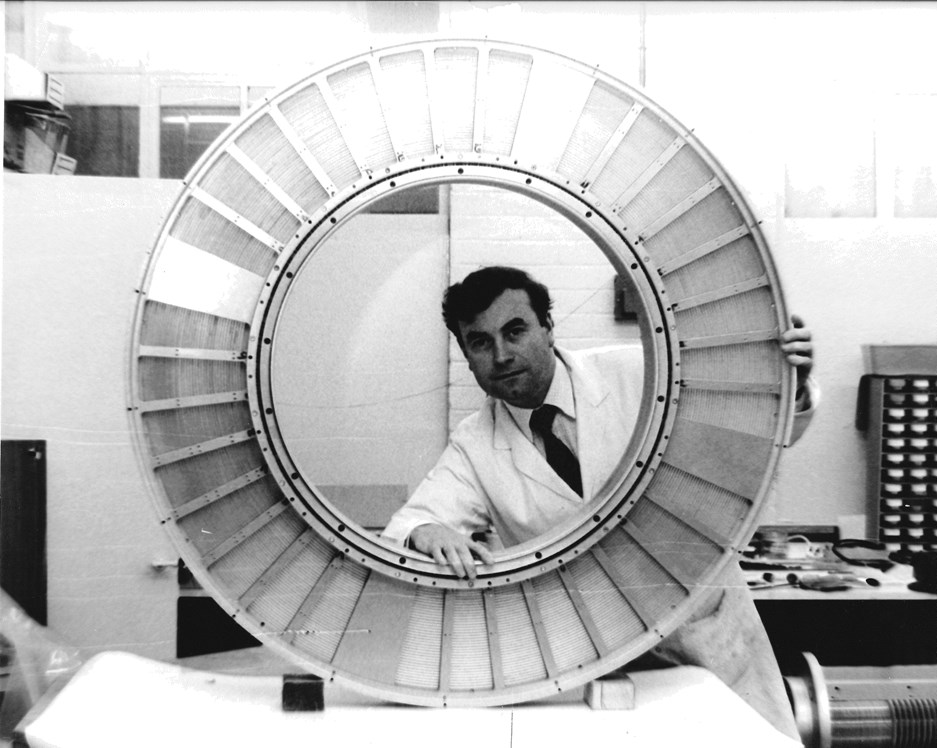PANDECT’S HISTORY
“Pandect” - in this context the word means ‘a work encompassing all science,’.
One of the two partners who founded Pandect Instrument Laboratories Ltd was Stan Purkiss, a licenced aircraft instrument engineer from the Royal Air Force who had passed CAA approval after exams and his experiences serving in North Africa during the Second World War. The second founding partner was Brion Hitchcock, he had worked locally during the war for Earnest Turner’s, which was in a protected industry in wartime, as it provided instrumentation to the forerunner of today’s UK Ministry of Defence.
In the first years, Pandect had two workshops in High Wycombe: one in Queen’s Road and one in Lindsay Avenue. This was before moving in 1952 to the present site on Cressex Industrial Estate.
Initially, there was only one small building on our new Cressex site. The estate was in its formation and comparatively rural. Pandect employees played cricket in the surrounding fields during lunchtime and fed unwanted morsels to the neighbouring donkeys.
The business in those early days was repair and maintenance of primarily gyroscopic instrumentation for fixed and rotary wing aircraft. It was undertaken within the workshops which were designed on the principles of an RAF maintenance unit; indeed, the largest single customer was the Ministry of Defence. There would be diversification from the core activities - contracts were won for instrumentation for naval torpedoes and dipping sonars, tanks and gun sighting systems. The company was also employed by the Air Accident Investigation Board of the UK Civil Aviation Authority to resolve questions of causes of accident; the knowledge and experience of Pandect was highly respected.
As far as Pandect was concerned, there was not a place on the planet where you could not know your exact location, speed, height, rate of climb, direction of travel, rate of acceleration, or deviation from true magnetic north. It would be further down the line however, before our work would assist in the development of our species’ efforts to escape as prisoners of planet earth and into outer space.
The company grew and expanded to four times its early 1950’s size and by the beginning of the ‘60’s a new Chief Inspector, Bob Field, was recruited to the business. He had an ambition to manufacture slip rings and potentiometers alongside the repair and calibration of aircraft instrumentation. A new company was formed to undertake the project in 1964, Pandect Precision Components Ltd. This doubled the size of the facility; a design department and an electro plating plant, an engineering workshop for lathes mills and drills, a mould shop and an assembly shop were all required. And so, the business grew.
From miniature slip rings in their thousands to capsule units in their hundreds and large parts for radar and remote-control vehicles in ones, twos, and tens the company built up a professional design and build engineering service in the niche market of mission-critical data and power transfer. The concentration was always engineering first, and excellent communication with the customers to provide them with what they needed; only one catalogue item was ever produced.

The applications of Pandect slip rings since 1964 have included many interesting and exciting projects for customers around the world.
Weather and defence radar; fixed and mobile
Armoured fighting vehicles
Missile launch systems and targeting systems.
Missiles-SAM’s, AAM’s and cruise missiles.
Sonar systems for anti-submarine warfare.
Remotely controlled vehicles on deep sea survey at the North Pole.
Test tables for The International Space station .
Formula one car racing R & D.
Motion and earthquake simulators.
R & D centrifuges.
Satellite-on-the-move tracking.
Achieving continuity in any business can be a challenge and no more so than in the case of a company where the transition is from the original entrepreneurial founders. During the course of diversification of Pandect, three companies emerged : Pandect Instrument Laboratories, Pandect Precision Components and Pandect Engineering, each with a different shareholder base. An amalgamation with a larger business seemed a possible way forward; there were many opportunities in this direction during the latter half of the twentieth century. The aerospace and defence industry was experiencing contraction as the perceived enemy retracted and at the same time the business philosophy centred around the maximisation of resources; this was to lead to what we know today as globalisation.
Largely through the efforts of Stan Purkiss, the temptation to sell the business was averted; to ensure continuity, therefore, a member of the family of one of the founders was recruited to the business; Hilary was Stan’s daughter. Her husband, Rodney Pope joined the business in 1980. He was to become our present Managing Director and see the transition through by consolidating the shareholder base, optimising the engineering skills and achieving the professional aspirations of the business.
There were many needs for a business with such a skilled and diverse workforce; some of the large conglomerates in the industry, seeking to maximise shareholder return, closed their not-so-profitable facilities down and this resulted in gaps in the supply chain.
Pandect had mastered the infamously capricious mechanics of the slip ring within the discipline of quality control that has grown from a CAA and MOD-approved and monitored system; it had attracted gifted and experienced engineers and technicians who would work tirelessly throughout their careers with the company to achieve the success deserved.
The end result for the company has been a worldwide reputation for engineering solutions to the problems of transmitting reliable power and quality signal and data across a moving contact, in outer space or in deep sea environments and everywhere else in between.
Today, Pandect is embracing the technology challenges of UAV’s “disrupting” the battle space and very high-definition cameras needing to pass vast data rates reliably through SRA’s with minimal delays .